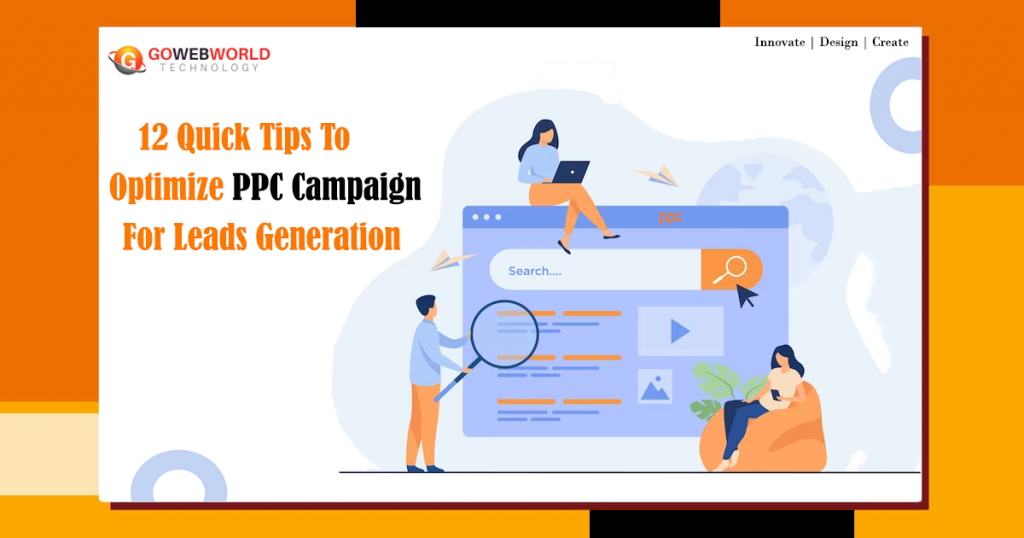Use targeted keywords: Research and select keywords that are relevant to your target audience and have high search volume. This will ensure that your ads are shown to the right people who are more likely to convert into leads.
Create compelling ad copy:
Write persuasive and engaging ad copy that clearly communicates the benefits of your product or service. Use strong calls-to-action to encourage users to click on your ads and submit their information.
Optimize landing pages:
Design and optimize your landing pages to be conversion-focused. Design dedicated landing pages that are tailored to your PPC campaign. Ensure that your landing page has a clear and prominent CTA that stands out, and that it is optimized for conversions. Keep the form fields to a minimum to reduce friction and make it easy for visitors to submit their information. Make sure they have a clear and prominent call-to-action, a simple and user-friendly form, and relevant content that aligns with your ad copy.
Implement ad extensions:
Take advantage of ad extensions such as call extensions, site link extensions, and location extensions. These extensions provide additional information and options for users to engage with your ads, increasing the chances of generating leads.
Monitor and analyze campaign performance:
Regularly review your campaign performance metrics such as click-through rate (CTR), conversion rate, and cost per lead. Identify any underperforming ads or keywords and make necessary adjustments to optimize your campaign for better lead generation results.
Use ad scheduling:
Analyze your campaign data to determine the times and days when your target audience is most active and likely to convert. Adjust your ad scheduling accordingly to maximize your budget and increase the chances of generating leads during those high-converting periods.
Implement remarketing campaigns:
Set up remarketing campaigns to target users who have previously visited your website or engaged with your ads. This allows you to stay top-of-mind and re-engage with potential leads, increasing the likelihood of conversion.
Test different ad formats:
Experiment with different ad formats such as text ads, display ads, and video ads to see which ones resonate best with your target audience. Monitor the performance of each format and allocate more budget to the ones that generate the most leads.
Utilize audience targeting:
Take advantage of audience targeting options such as demographics, interests, and behaviors to narrow down your target audience. This helps you reach the right people who are more likely to be interested in your offering and convert into leads.
Continuously optimize your campaign:
Regularly review and analyze your campaign data to identify areas for improvement. Test different ad variations, landing page layouts, and targeting options to optimize your campaign for maximum lead generation. Stay up-to-date with industry trends and changes in PPC advertising platforms to ensure you are using the latest strategies and features.
Compelling Ad Copy:
Create compelling and concise ad copy that highlights the benefits and unique selling points of your product or service. Use strong calls-to-action (CTAs) to encourage users to click on your ads and convert into leads. Make sure your ad copy aligns with the keywords you are targeting to improve ad relevance.
A/B Testing:
Continuously perform A/B testing on different elements of your PPC campaign, including ad copy, headlines, landing page design, and CTA placement. Test one variable at a time to accurately measure the impact of each change. Optimize your campaign based on the results of these tests to improve lead generation performance.
Conversion Tracking and Analytics:
Set up conversion tracking and analytics to measure the effectiveness of your PPC campaign in generating leads. Use tools like Google Analytics or conversion tracking pixels to track conversions, identify the most successful keywords and ads, and make data-driven decisions to optimize your campaign further.
Remember, optimization is an ongoing process, so monitor your campaign regularly, make adjustments based on the data you collect, and refine your strategies to continuously improve your lead generation efforts.

